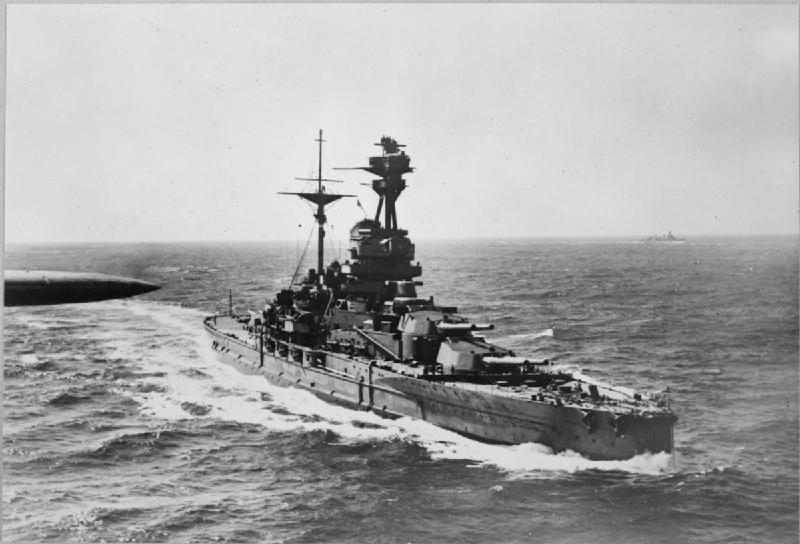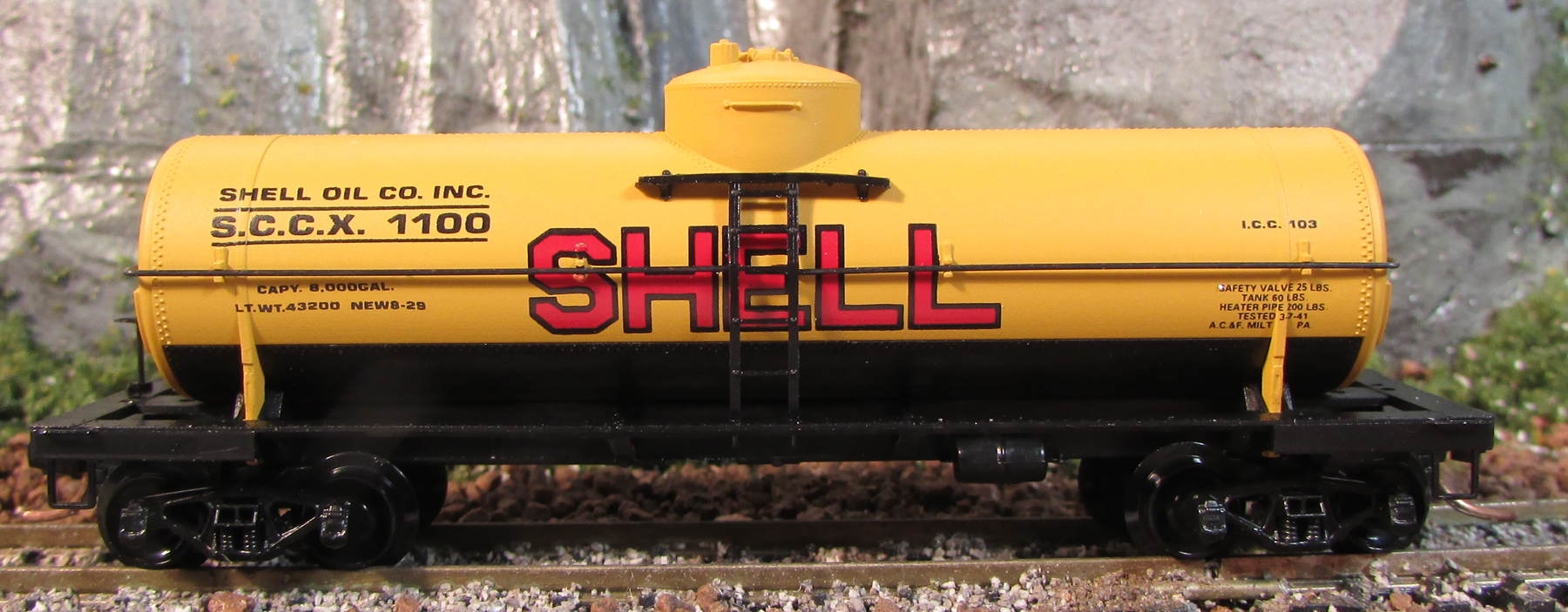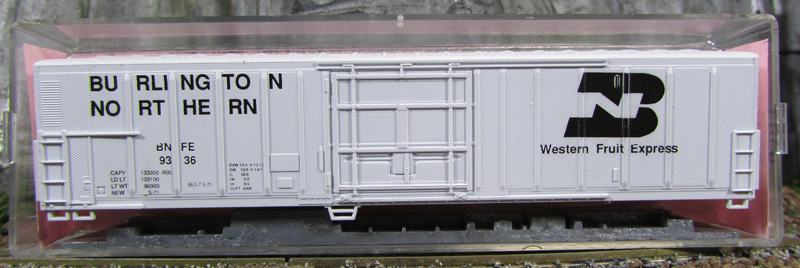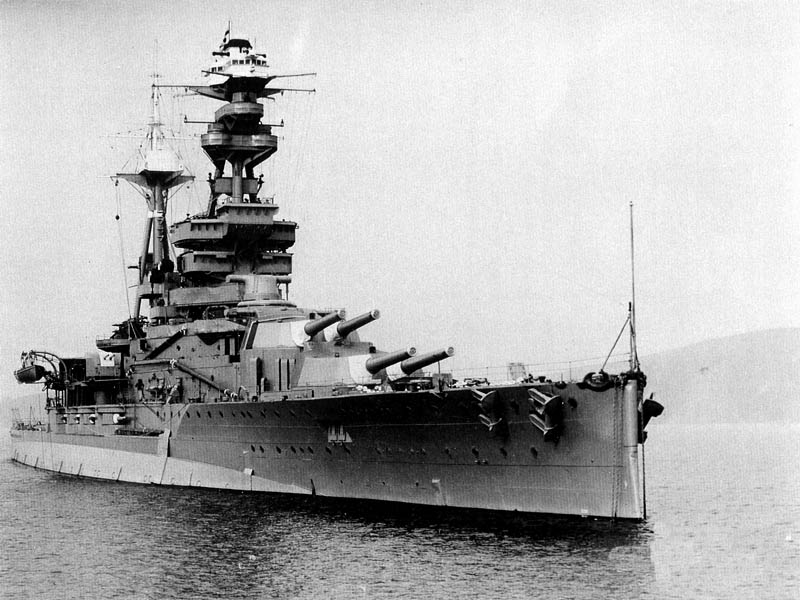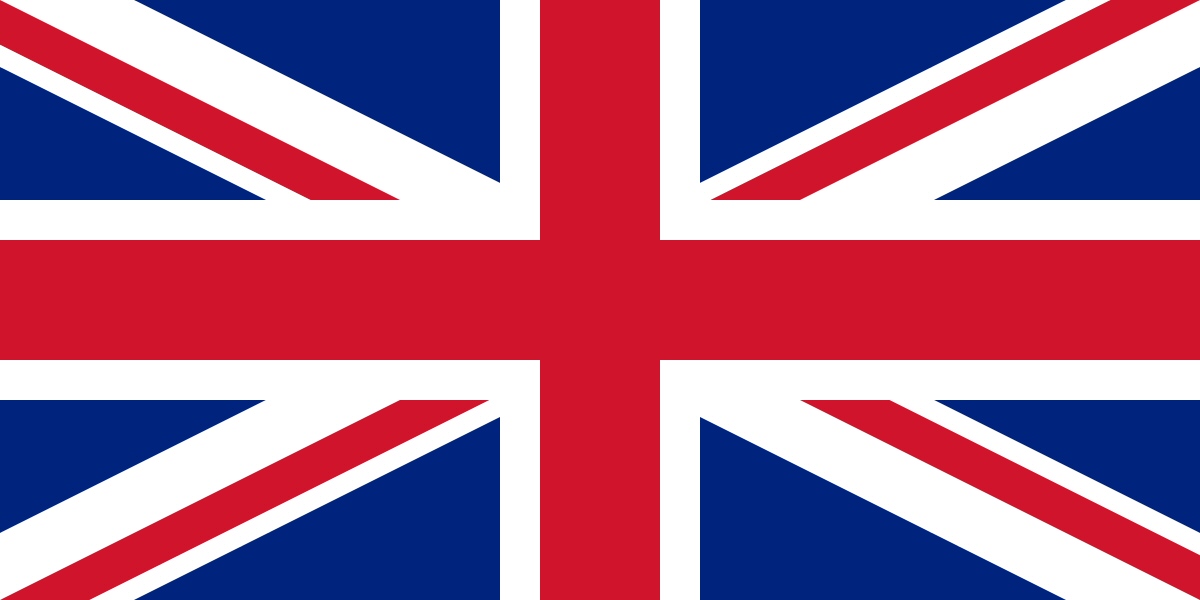History: HMS Revenge (pennant number: 06) was the lead ship of five Revenge-class super-dreadnought battleships built for the Royal Navy during the First World War in the mid-1910s. The ships were developments of the Queen Elizabeth-class battleships, with reductions in size and speed to offset increases in armour protection whilst retaining the same battery of eight 15-inch (381 mm) guns. She was laid down in 1913, launched in 1915, and was commissioned in February 1916, early enough to be worked up in time to see action with the Grand Fleet at the Battle of Jutland in May that year. During the engagement, she engaged German battlecruisers, damaging two of them before being forced to turn away to avoid torpedoes that damaged her squadron flagship and caused the squadron to lose contact with the rest of the fleet. Revenge emerged from the battle unscathed, but she saw no further action during the war, as the British and German fleets turned to more cautious strategies owing to the risk of submarines and naval mines.
During the 1920s and 1930s, Revenge alternated between the Atlantic Fleet and the Mediterranean Fleet. Whilst serving in the Mediterranean in the early 1920s, the ship went to Turkey twice in response to crises arising from the Greco-Turkish War, including the Great Fire of Smyrna in 1922. The ship's interwar career was otherwise uneventful. With the outbreak of the Second World War in September 1939, Revenge was used to escort convoys and transport significant quantities of the country's gold reserves to Canada as part of Operation Fish; these activities continued into 1940. She was involved in the seizure of French warships in Portsmouth after the French surrender in July 1940.
In October 1940, she conducted Operation Medium, an attack on German transport ships that had been collected along the English Channel in preparation for the since-cancelled invasion of Britain. Revenge thereafter resumed convoy escort duties until October 1941, when she was reassigned to the 3rd Battle Squadron and sent to the Far East as tensions with Japan began to rise. British naval forces were strengthened further after the start of the Pacific War in December, leading to the creation of the Eastern Fleet. Revenge and her sister ships were deemed too old to be of use against the Japanese fleet, so they were relegated to convoy escort duties in the Indian Ocean. Badly worn out by 1943, Revenge returned home, where she was removed from front-line service. Her last voyage was to carry Prime Minister Winston Churchill to the Tehran Conference in November 1943. Upon returning, she was assigned to the training establishment HMS Imperieuse, disarmed, and eventually broken up in 1948.
During the 1920s and 1930s, Revenge alternated between the Atlantic Fleet and the Mediterranean Fleet. Whilst serving in the Mediterranean in the early 1920s, the ship went to Turkey twice in response to crises arising from the Greco-Turkish War, including the Great Fire of Smyrna in 1922. The ship's interwar career was otherwise uneventful. With the outbreak of the Second World War in September 1939, Revenge was used to escort convoys and transport significant quantities of the country's gold reserves to Canada as part of Operation Fish; these activities continued into 1940. She was involved in the seizure of French warships in Portsmouth after the French surrender in July 1940.
In October 1940, she conducted Operation Medium, an attack on German transport ships that had been collected along the English Channel in preparation for the since-cancelled invasion of Britain. Revenge thereafter resumed convoy escort duties until October 1941, when she was reassigned to the 3rd Battle Squadron and sent to the Far East as tensions with Japan began to rise. British naval forces were strengthened further after the start of the Pacific War in December, leading to the creation of the Eastern Fleet. Revenge and her sister ships were deemed too old to be of use against the Japanese fleet, so they were relegated to convoy escort duties in the Indian Ocean. Badly worn out by 1943, Revenge returned home, where she was removed from front-line service. Her last voyage was to carry Prime Minister Winston Churchill to the Tehran Conference in November 1943. Upon returning, she was assigned to the training establishment HMS Imperieuse, disarmed, and eventually broken up in 1948.
Class: The Revenge-class battleships (listed as Royal Sovereign class in several editions of Jane’s Fighting Ships, as with the 1919 and 1931 editions, and sometimes also known as the "R" class) were five battleships of the Royal Navy, ordered as World War I loomed, and launched in 1914–1916. There were originally to have been eight of the class, but two were later redesigned, becoming the Renown-class battlecruisers, while the other, which was to have been named HMS Resistance, was cancelled.
The ships of the class were slower and smaller than the preceding Queen Elizabeth-class battleships. Despite sometimes being referred to as the "Royal Sovereign class", official documents from World War I clearly state that the class was known as the Revenge class; the confusion apparently even extended to the Grand Fleet‘s commander, Admiral of the Fleet Jellicoe, as they are mentioned in both fashions in his voluminous The Grand Fleet 1914–1916: Its Creation, Development and Work.
The ships of the class were slower and smaller than the preceding Queen Elizabeth-class battleships. Despite sometimes being referred to as the "Royal Sovereign class", official documents from World War I clearly state that the class was known as the Revenge class; the confusion apparently even extended to the Grand Fleet‘s commander, Admiral of the Fleet Jellicoe, as they are mentioned in both fashions in his voluminous The Grand Fleet 1914–1916: Its Creation, Development and Work.
Nationality: The United Kingdom, made up of England, Scotland, Wales and Northern Ireland, is an island nation in northwestern Europe. England – birthplace of Shakespeare and The Beatles – is home to the capital, London, a globally influential centre of finance and culture. England is also site of Neolithic Stonehenge, Bath’s Roman spa and centuries-old universities at Oxford and Cambridge.
Item created by: gdm on 2019-03-27 09:37:05. Last edited by gdm on 2019-03-27 09:42:13
If you see errors or missing data in this entry, please feel free to log in and edit it. Anyone with a Gmail account can log in instantly.
If you see errors or missing data in this entry, please feel free to log in and edit it. Anyone with a Gmail account can log in instantly.


